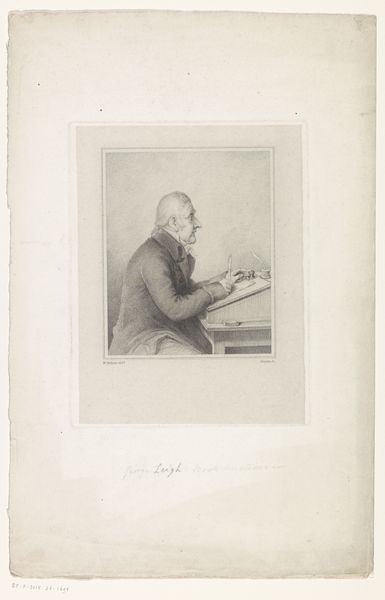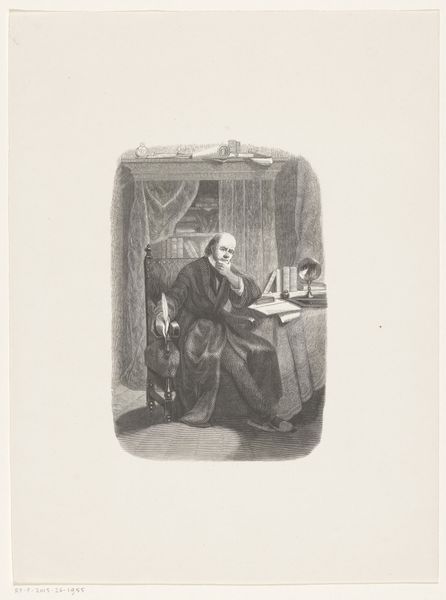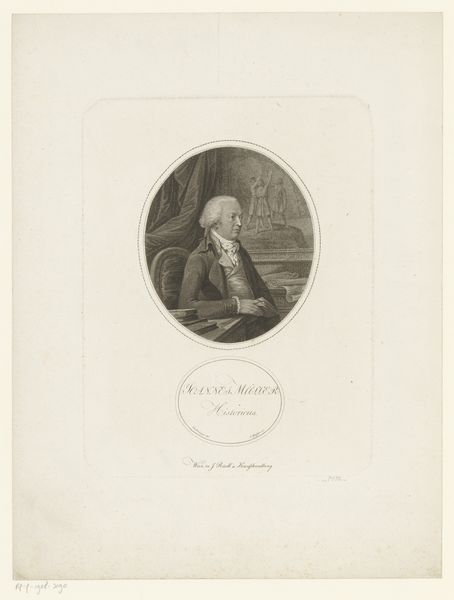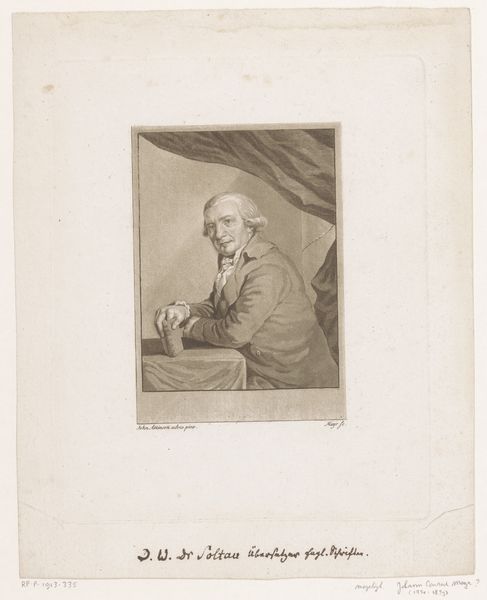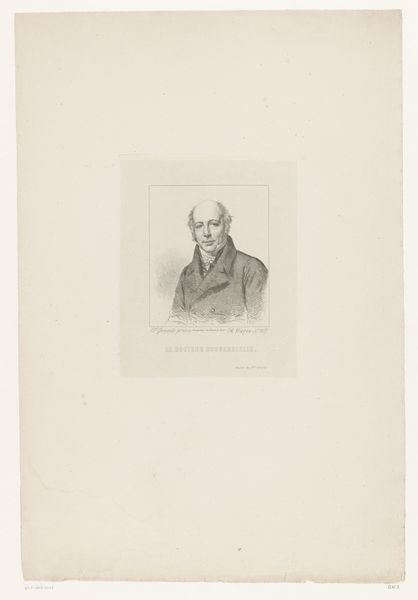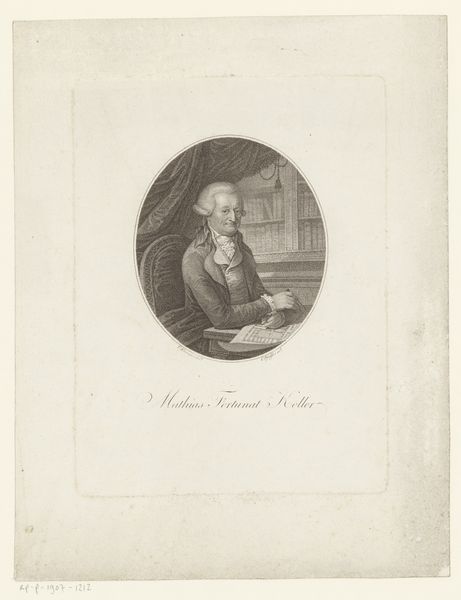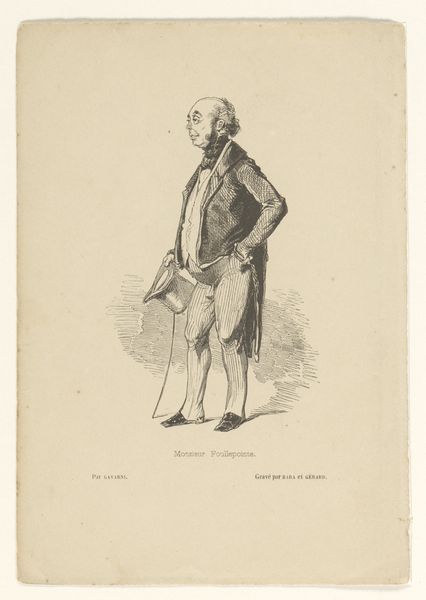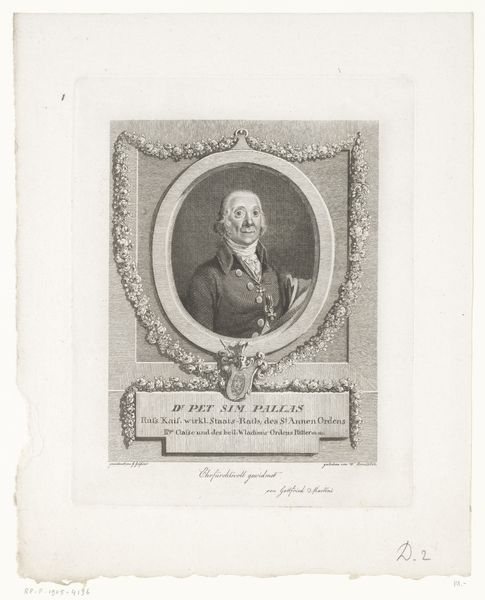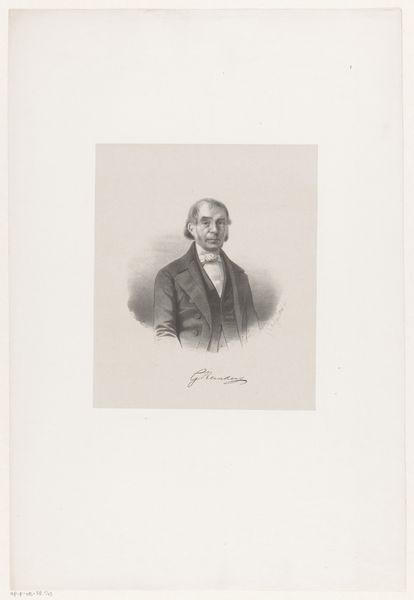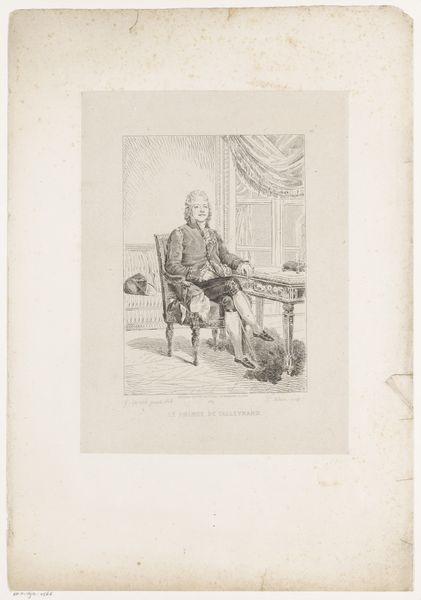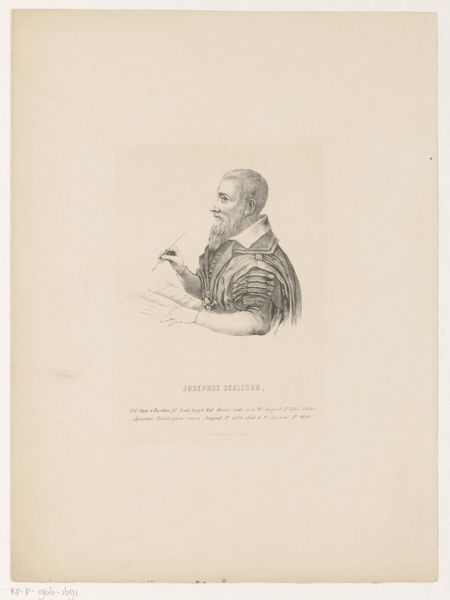
print, engraving
#
portrait
#
neoclacissism
# print
#
old engraving style
#
figuration
#
genre-painting
#
engraving
Dimensions: height 218 mm, width 153 mm
Copyright: Rijks Museum: Open Domain
Curator: This finely wrought engraving, dating roughly from 1783 to 1840, presents us with a portrait of the poet Giovanni Melli. Editor: There's something profoundly serene about this image. The gray scale, the simple composition… it speaks of a quiet intellectualism. I can almost hear the scratching of a quill pen. Curator: Luigi Rados, the artist, places Melli within a domestic sphere, though one carefully constructed to evoke neoclassical ideals of restraint and reason. Notice how his figure intersects with the edges of the frame and geometric form table, all the better to indicate reason as part of humanity. The dog curled beneath his feet, and the intimate setting, also soften what could have been a rigidly formal depiction. Editor: That little dog…such a subtle inclusion! For centuries, dogs have been potent symbols of fidelity and loyalty. Melli’s association with the animal reflects an attempt to display virtuous character through allegory. Curator: Precisely. Think about the positioning itself, and where is Giovanni Melli sitting, considering the time era for artistic productions? He appears elevated but that could merely represent how class operated then as now, no? And how would that be altered based on social relations? Editor: Yes, a consideration of Melli’s standing in relation to larger social currents of his time is critical here. How are masculinity and intellect presented, for example? We get a glimpse into an attempt to represent success through respect and control, an idea embedded into patriarchal and gender norms of that time period, reflected in art like this print. Curator: And yet the gaze remains compelling. It invites curiosity even while adhering to many codes expected of the era for portraiture of notable figures. What about that small detail of light falling across his features? What symbols would that illumination represent or reference, do you think? Editor: I see a halo of sorts forming with that play of light. A sort of modern-day, almost secular saint reflected in the intellectual prowess of the sitter. What did we gather in understanding that Melli had requested the illustration? Curator: Yes, how much the portrayal caters to the tastes or demands of Melli, and his social milieu should not be dismissed. Thanks to him the iconography in his world lives again here. Editor: Indeed. This offers much food for thought concerning representations of power and its performance even within the domestic space.
Comments
No comments
Be the first to comment and join the conversation on the ultimate creative platform.
